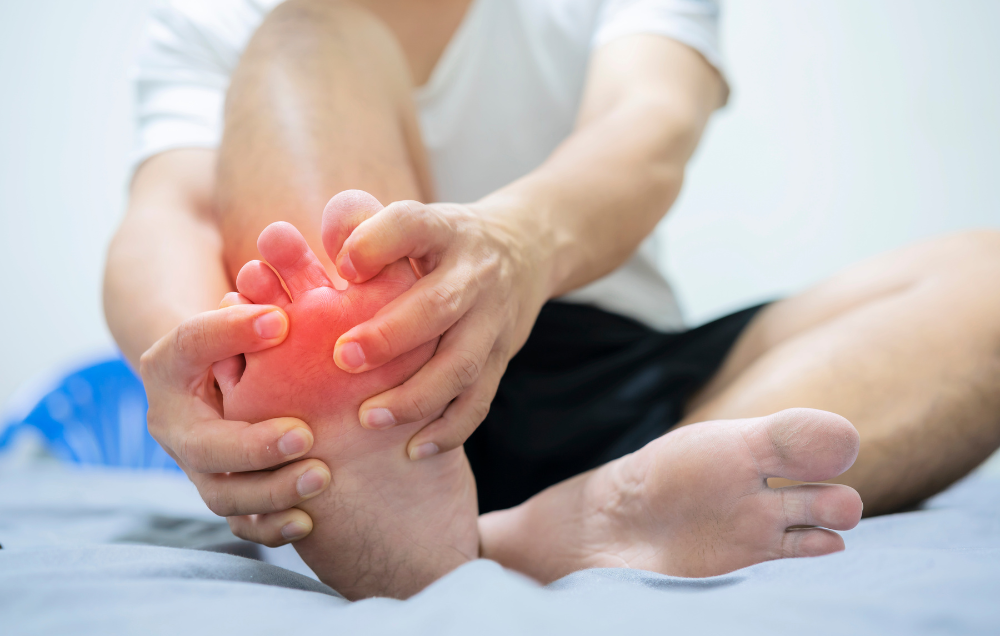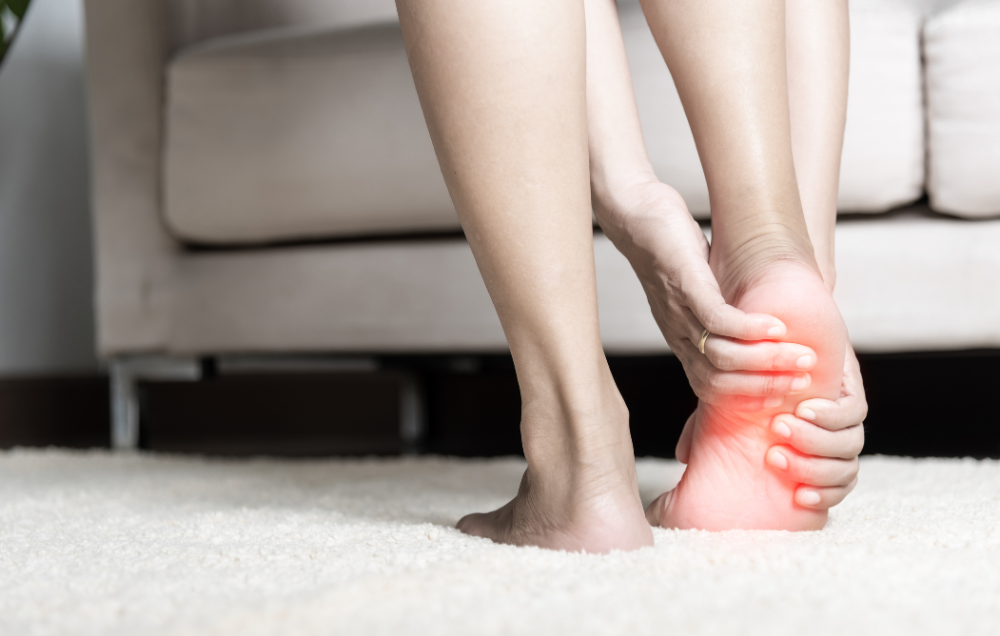Contents
Foot bursitis is an inflammatory condition where fluid-filled sacs called bursae swell. Bursae can be found in many different areas of the body including the foot. Bursitis in the foot can feel like heat emanating from the inflamed area. You may feel pain when walking or running, even increased pain when on tiptoes or bending the foot, or pain when moving your foot around. Or you may see redness and swelling or feel stiffness around the affected joint(s).
Experiencing bursitis in your foot is fairly common. It is especially common among athletes and runners because of the wear and tear they put on their feet. In a medical study including 100 ankles, the frequency of retrocalcaneal bursitis, which is a common type of bursitis that affects the heel, was 28%.
Physical therapists can help with foot bursitis because it can occur from poor physical practices. For example, if you wear high heels or tight shoes often, then you may be putting extra pressure on your feet, making you susceptible to bursitis. Or if you lift heavy weights or do a lot of jumping or running, you may also be more susceptible to developing bursitis in your feet. A physical therapist can give you exercises and treatments to strengthen your affected foot and reduce the swelling in the bursa.
What treatments can I receive from a physical therapist for foot bursitis?
Many physical therapy treatments can reduce inflammation and help with reducing pain in the body. Physical therapists can help with foot bursitis because they can advise you on movements that may have caused or contributed to developing foot bursitis. Also, your range of motion with foot bursitis may be limited due to pain, so a physical therapist can help you increase your flexibility. They can work on providing these and other benefits by building you a treatment plan that may include:
- Electrical stimulation
Electrical stimulation can help with foot bursitis because of its ability to improve circulation and reduce inflammation. This treatment is often done with a handheld device that sends a controlled amount of electrical waves into the targeted area. Electrical waves can penetrate past the skin into the tissue of the affected area. The waves can help with speeding up recovery time in the tissue by increasing circulation, relaxing the muscles, and reducing inflammation and fluid buildup. This can help ease the stiffness and pain that you feel with foot bursitis.
- Kinesiology taping
Kinesiology taping is when a physical therapist places tape in certain areas to help with painful movement and to assist you as you move. The tape helps you move with less pain and reduces tightness to prevent further damage to the swelling bursa. This can help you have more mobility with the support of the tape.
- Soft tissue manipulation
Working out the tension in soft tissue with soft tissue manipulation (STM) can help boost foot mobility and prevent tearing of muscles or tendons. During STM, your physical therapist will slowly manipulate the tissue around where you’re experiencing foot bursitis symptoms. They’ll use the massage-like movements of STM to increase mobility and relieve knots or rigid areas in the surrounding soft tissue. Doing so is intended to help ease the pressure on the painful bursa and reduce pain. This treatment option can also help prevent symptoms from worsening.
- Joint manipulation
Poor posture, misaligned joints, tight muscles, abnormal foot biomechanics and irritated nerves can all play a role in developing foot bursitis. Joint manipulation is a treatment technique in which a passive force is applied to a joint to help with expanding the joint’s range of movement. It can help reduce pain and also increase the amount of circulation that the area is getting. By freeing up the joint, you may feel that your pain is lessened during movement and walking on your foot. It can also help with recovering from an injury or from a buildup of scar tissue by moving and loosening the tissue, which helps promote healing.
Get help with foot bursitis symptoms from Lattimore PT
Talk with one of our highly trained physical therapists at Lattimore Physical Therapy about your foot issues. At Lattimore PT, a simple conversation can be the beginning of your treatment plan. Making a consultation with us can be easy and stress-free, and it can help you learn more about your injury and the available treatment options. With their knowledge of the systems of the foot and ankle, they can create a treatment plan that meets your goals and needs in your health journey.
Contact our team today for more information about our foot bursitis treatment services or to schedule an initial appointment.



